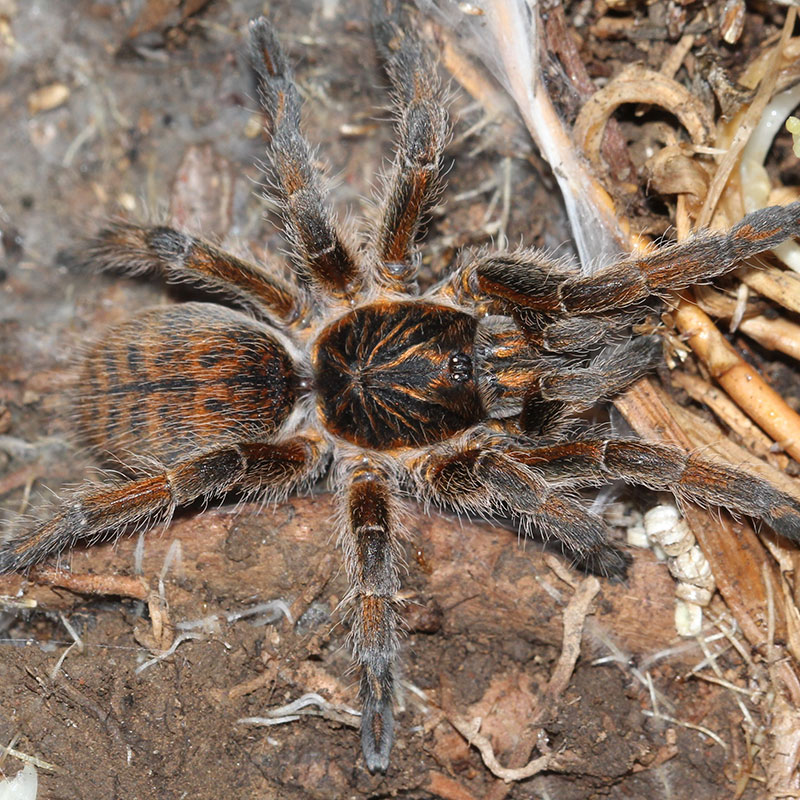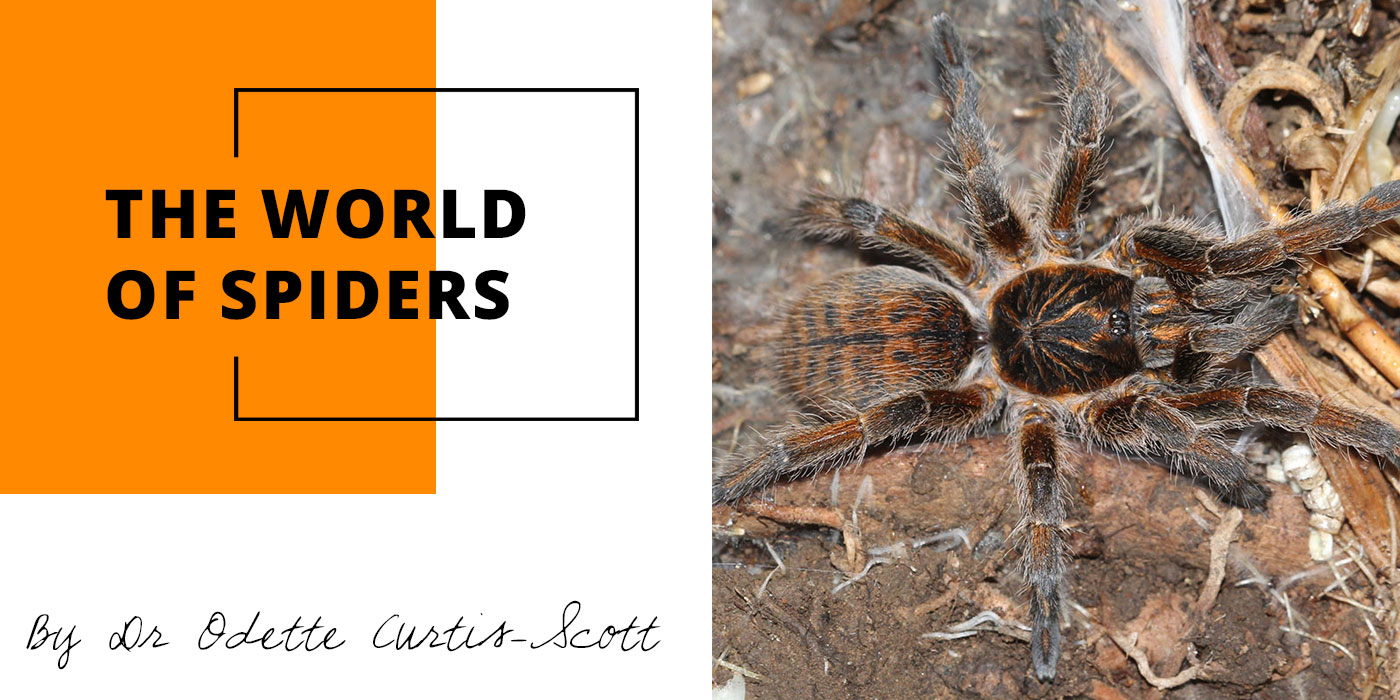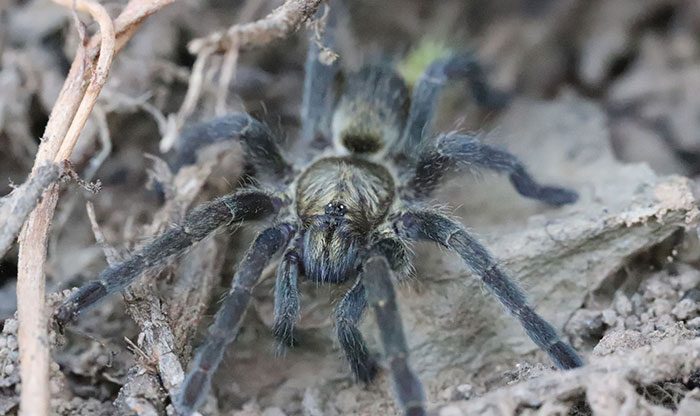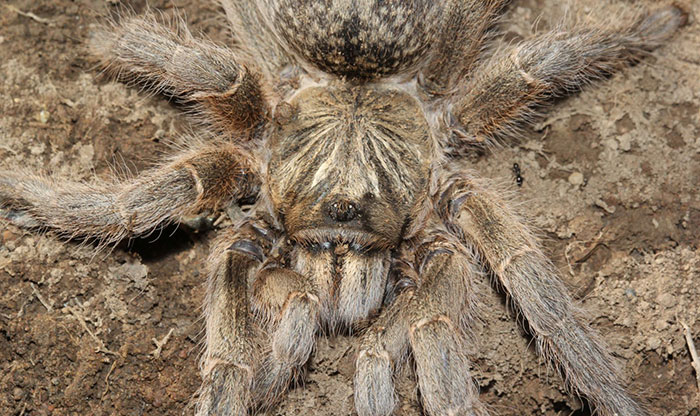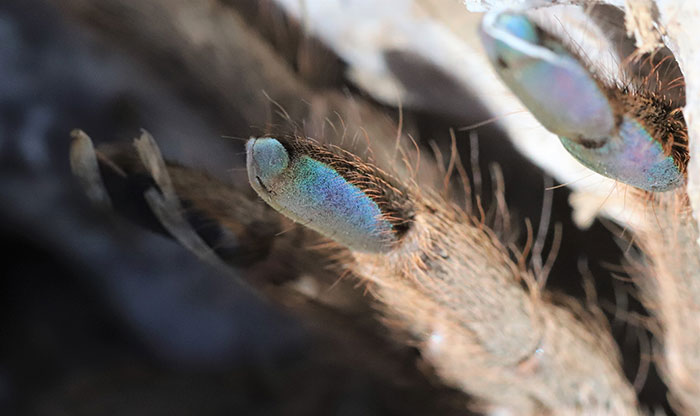Above: H. cafreriana
My interest in the natural world really started with a deep love for birds of prey: For some reason, I was drawn to them at a very young age, although I only got to know them in my early studies. While pursuing my degrees and building up the ORCT, I also managed to see two of the ‘big and hairies’ that were top on my ‘bucket list’: Tigers (in India) and Gorillas (in Rwanda). Like most ecologists, I dream of travelling all over the world in pursuit of sightings of the large, threatened animals found on our planet.
Nevertheless, I have become enamoured with the smaller creatures found on our very own doorstep… most often, unnoticed. Raptors took me to Black Harriers and these brought me into the Renosterveld, to life-in-miniature, where the true diversity of the gems here can only truly be appreciated at ground-level. I have stayed here ever since!
While observing the smaller animals, and in particular how they interact with plants, one starts to see even more: from the beautiful and elegant, to the bizarre and freaky, and even, dare I say it, CUTE! A whole new world emerges, and one in particular has totally enchanted and enraptured me: The World of Spiders.
My interest in spiders was inspired by our last few bioblitzes, where we found some beautiful creatures with our friends, Cliff and Suretha Dorse and Grant and Brent Reed. I have so much to learn about spiders that I cannot even call myself a novice.
Above: Harpactira sp. nov. ‘robinsonii’
But by sharing what I’ve learned and seen, I hope to inspire others to start paying these critters more attention. They do not deserve the bad press they are so unfortunate to receive.
Spiders are shy, reclusive creatures who would rather crawl away from you and hide than ‘bite’ or ‘come after’ you. Spiders that are teased and provoked may bite. Only a few species amongst the hundreds that we have are venomous – and essentially, none are fatal. It is usually the bite itself that can cause problems (i.e., become septic if not kept clean), but in most cases only the venom from a few species is considered dangerous.
But this series of spider blogposts is not about spiders and venom (there is enough literature on that). This is about sharing some of the incredible creepy crawlies that we have found in Renosterveld.
The ORCT prides itself on changing the mindsets of people, by sharing with them the wonders of the natural habitats on our doorstep. I hope we can do the same with spiders and that those who are reticent may also grow to love them, as I have.
That’s why I’ll be sharing a series of blogposts on spiders over the coming weeks. I have divided them up as follows, based on Ansie Dippenaar-Schoeman’s book, Field Guide to the Spiders of South Africa:
- Burrow-dwelling Ground-Dwellers
- Web Dwellers
- Plant Dwellers and the
- Free-living Ground-Dwellers.
As with many invertebrates, the various species (and sometimes genera) can only be told apart by experts, as they require close examination under microscopes.
We start the series taking a look at the burrow dwelling spiders of Renosterveld.
Above: Harpactira dictator
BURROW DWELLERS
Theraphosidae: Baboon Spiders
These very large, often-maligned but beautiful, shy spiders are ground-dwellers who live in silk-lined burrows or retreats under rocks (or in trees in other habitats). Known as Tarantulas in the northern Hemisphere, our local version received their name from the last two digits on their legs which resemble the finger of a baboon.
The most commonly-encountered genus in Renosterveld is Harpactira, represented by about 16 species in South Africa (of which we have recorded three to date): H. cafreriana (Cape Orange Baboon Spider) H. dictator and H. sp. nov. ‘robinsonii’, an undescribed species first recorded in Robertson that has yet to receive a formal scientific name (thus temporarily referred to as robinsonii).
They typically make use of the ‘sit and wait’ strategy to capture prey, thus most is captured at or near the entrance to their retreats. They are capable of delivering a very painful bite (which can become infected) if taunted and should be left undisturbed.
Please report any Baboon Spider sightings to the Baboon Spider Atlas. While some people like the idea of keeping these animals as pets, it should be noted that all Baboon Spiders in South Africa are “listed” and therefore protected and may not be caught, kept in captivity or transported without a permit from the local conservation authority. Permits are not given freely, and in the Western Cape they are not issued at all. Please leave wild creatures where they belong!
Above: Harpactira dictator
ACKNOWLEDGEMENTS
I would like to thank you National Lotteries Commission of South Africa for their assistance with the purchase of additional camera equipment to support the ORCT’s photographic work. A big thank you to Astri Leroy for checking this piece for correctness and teaching me a lot! My sincerest thanks to the Spider Club of South Africa for their fantastic Facebook page, led by a group of passionate spider experts and members who are only too willing to give of their time to identify photographs and answer peoples’ questions. I highly recommend joining this club and / or following them on Facebook: www.spiderclub.co.za or Facebook: @theSpiderClubOfSouthernAfrica.
Visit the National Lotteries Commission (NLC) website to find out about other projects supported by the NLC.

